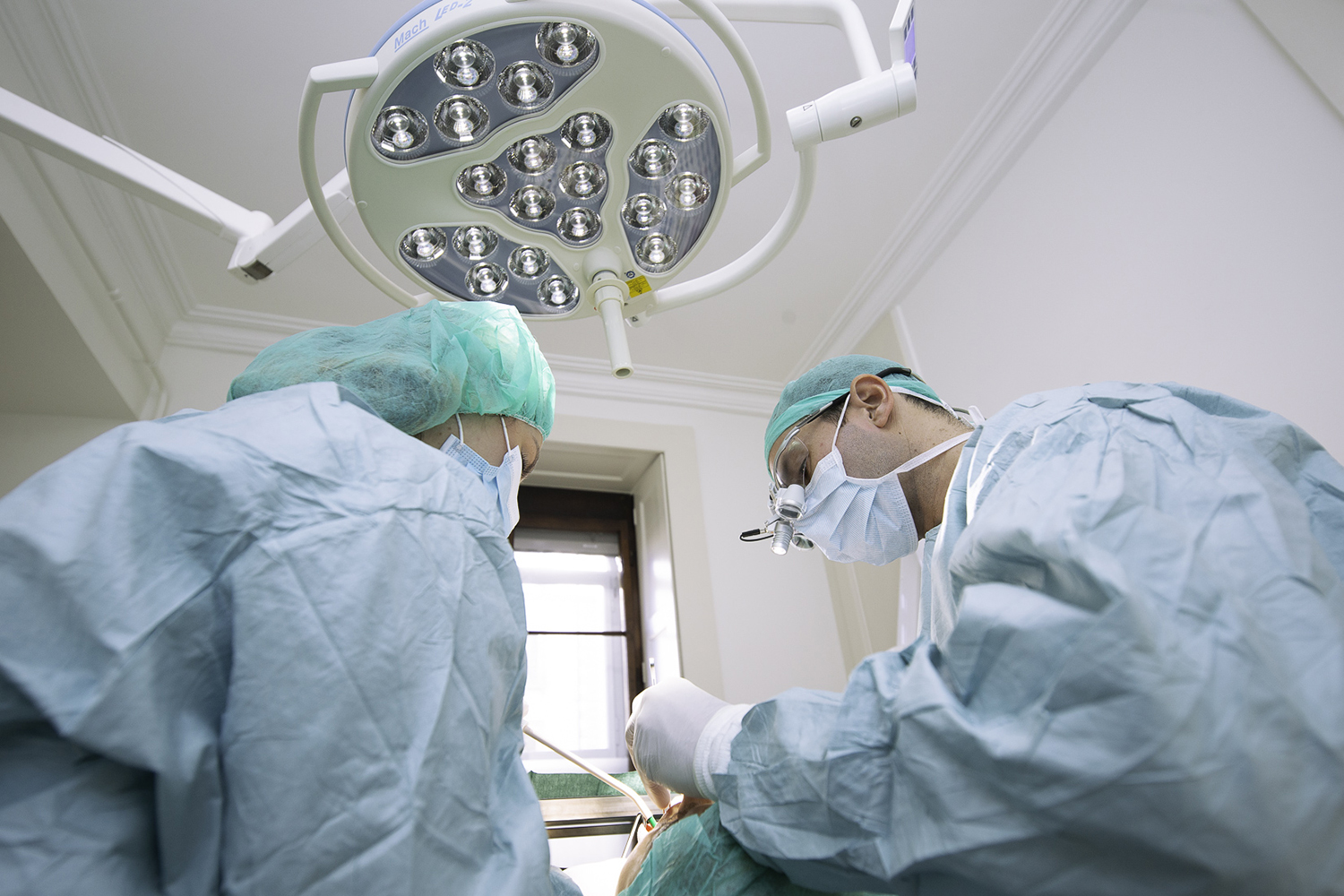Surgical periodontal treatment
Surgical periodontal therapy
Some more advanced cases require corrective surgical phases. After periodontal etiological treatment and a periodontal reassessment at 6-8 weeks, your periodontist may decide to finalize the treatment of your disease with surgery. However, we always prioritize non-surgical treatment when the prognosis is similar.
Objectives of surgical treatments
The objectives of these treatments are multiple:
- Access root surfaces in the presence of deep pockets
- Eliminate tartar
- Eliminate deep inflammation
- Reduce the depth of the pockets
- Regenerate the supporting tissues of the tooth
Various surgical techniques
There are numerous proven surgical techniques with different indications:
-
Open flap Surgery
We use this surgery to access areas not reachable by non-surgical treatment, such as the root surfaces between teeth or lesions between roots. Additionally, we can regularize the bone contour and reduce gingival pockets.
-
Induced tissue regeneration periodontal surgery
The objective of this surgery is to regenerate the supporting tissues of the tooth, such as cementum, ligament, and bone. We access areas not reachable by non-surgical treatment and then apply enamel matrix derivative proteins, called amelogenins, to induce tissue regeneration.
These surgical techniques allow us to achieve optimal results in effectively treating advanced periodontal diseases. By using proven methods, we ensure that each patient receives the best possible care to regain optimal oral health.
Clinical sase
Regenerative surgery
-
Guided tissue regeneration periodontal surgery
Our goal with this surgery is to regenerate the supporting tissues of the tooth: the cementum, ligament, and bone. We access areas that are unreachable by non-surgical treatment, such as the root surfaces between teeth or lesions between roots. Then, we place membranes to guide the regeneration of tissues.
-
Crown lengthening surgery
We perform this surgery to restore a biological space allowing the gum to reattach to the tooth. We shape the bone and reposition the gum. Additionally, this surgery corrects the necks of anterior teeth during aesthetic prosthetic procedures.
-
Pre-prosthetic tissue management surgery
With this surgery, we optimize the periodontal condition before prosthetic procedures. We remove parts of roots, restore biological spaces, and thicken and reposition gingival tissues.
-
Mucogingival surgery or periodontal plastic surgery
We reconstruct and reposition the soft tissues, particularly the gums, through mucogingival surgery or periodontal plastic surgery. We primarily use grafting techniques to achieve this goal. Currently, we favor subepithelial connective tissue grafts because they show the best results. We only harvest the internal part of the tissues and graft it beneath the mispositioned or too-thin gum.
A periodontal disease can be treated effectively. The key to success is to follow the treatment plan proposed by your periodontist and to eliminate the bacterial plaque that triggers the disease process by maintaining excellent oral hygiene.
Periodontal maintenance
Once we have treated the disease, we implement supportive periodontal therapy, or maintenance, to maintain periodontal health. These sessions help control potential recurrences of pocket formation and intercept them quickly. Additionally, they reinforce hygiene techniques and ensure a thorough cleaning. This reduces the amount of plaque and deposits that are difficult for the patient to access. Generally, we schedule these sessions every 3 to 4 months.
How much does surgical periodontal treatment cost?
For surgical periodontal treatment of half a jaw using a regeneration technique, the fee is CHF 1578.-
The cost depends on the number of teeth to be treated and the advancement of the disease. Your periodontist will provide an estimate during the first consultation.
Contact us today to learn more about periodontal treatments. We are here to answer all your questions and provide you with the best possible dental care!






